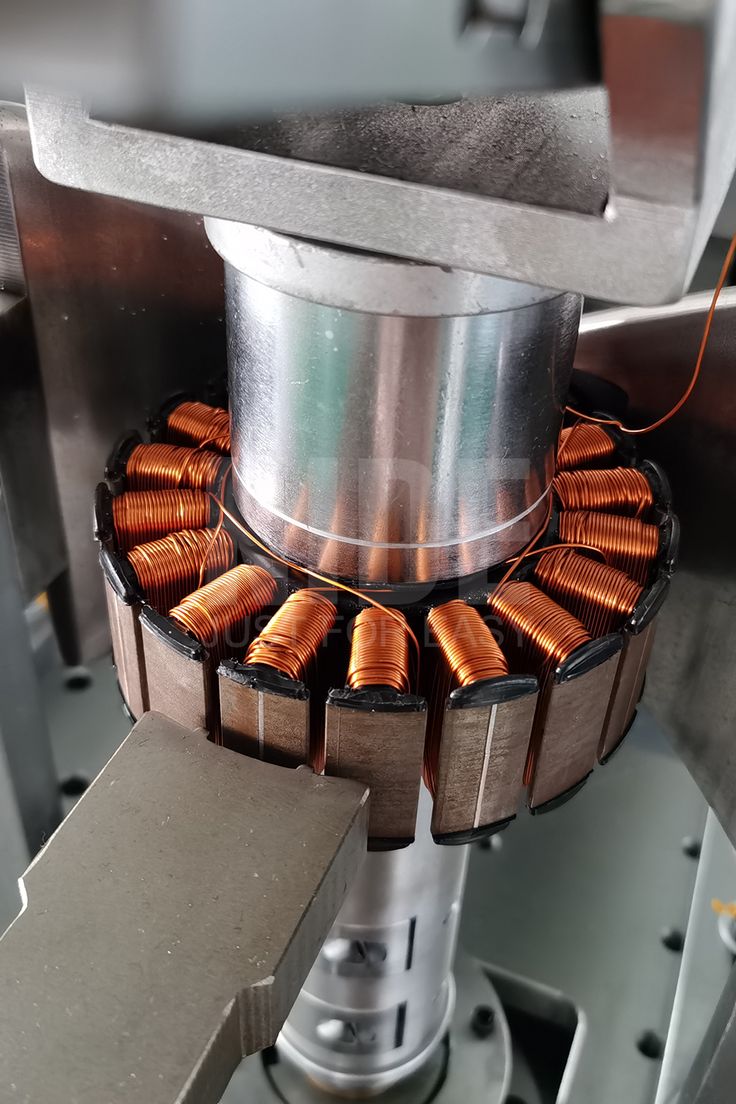How Are Stator Winding Machines Transforming the Electric Motor Industry?
The electric motor industry is undergoing a remarkable transformation, driven by advancements in technology and the demand for more efficient, reliable, and high-performance motors. Central to this transformation is the evolution of stator winding machine, which is crucial in the manufacturing process of electric motors. These machines have not only revolutionized the way motors are produced but have also significantly enhanced the quality, efficiency, and scalability of motor manufacturing.
In this comprehensive article, we will explore the various ways in which stator winding machines are transforming the electric motor industry. We will delve into the technology behind these machines, their impact on the production of electric motors, particularly Brushless Direct Current (BLDC) motors, and the broader implications for the industry.
1. Introduction to Stator Winding Machines
Stator winding machines are specialized equipment used in the production of electric motors. The stator, a critical component of an electric motor, consists of a series of coils that generate a magnetic field when an electric current passes through them. These coils are wound with copper or aluminum wire, a process that requires precision and accuracy to ensure the motor’s efficiency and performance.
Traditionally, the winding of stators was done manually, a labor-intensive process that was prone to errors and inconsistencies. However, with the advent of automated stator winding machines, the process has become highly efficient, reliable, and scalable. These machines are capable of winding the stator coils with exceptional precision, ensuring uniformity and reducing the likelihood of defects.
2. The Role of Stator Winding Machines in the Electric Motor Industry
The electric motor industry is diverse, with applications ranging from small household appliances to large industrial machines. Regardless of the application, the performance and reliability of an electric motor are largely determined by the quality of its stator winding. This is where stator winding machines play a crucial role.
2.1 Enhancing Production Efficiency
One of the most significant impacts of stator winding machines on the electric motor industry is the enhancement of production efficiency. Automated stator winding machines are capable of winding stator coils at a much faster rate than manual methods. This increase in speed does not come at the expense of quality; in fact, the precision of these machines ensures that each coil is wound to exact specifications, minimizing errors and reducing the need for rework.
The efficiency gains provided by stator winding machines allow manufacturers to produce electric motors in larger volumes, meeting the growing demand in various sectors such as automotive, aerospace, and industrial machinery. This scalability is particularly important in the context of the increasing adoption of electric vehicles (EVs), where the demand for high-quality electric motors is rapidly rising.
2.2 Improving Motor Performance and Reliability
The performance of an electric motor is heavily dependent on the quality of its stator winding. Any inconsistencies or defects in the winding can lead to inefficiencies, increased energy consumption, and a higher likelihood of motor failure. Stator winding machines address these challenges by ensuring that each coil is wound with the utmost precision and consistency.
2.3 Reducing Production Costs
While the initial investment in automated stator winding machines can be significant, the long-term cost savings they provide are substantial. By automating the winding process, manufacturers can reduce labor costs, minimize material waste, and decrease the likelihood of defects that would require costly rework or scrapping of components.
Moreover, the precision and consistency offered by stator winding machines result in motors that are more reliable and have a longer lifespan, reducing the need for maintenance and replacement. This, in turn, leads to cost savings for end-users, making electric motors more economically viable and attractive in a wide range of applications.
3. The Evolution of Stator Winding Machines
The development of stator winding machines has been a gradual process, driven by advancements in technology and the changing needs of the electric motor industry. Understanding the evolution of these machines provides valuable insight into their current capabilities and the future direction of motor manufacturing.
3.1 From Manual Winding to Automation
In the early days of electric motor production, stator winding was a manual process. Skilled workers would wind the coils by hand, a time-consuming and labor-intensive task that required a high level of precision. However, as the demand for electric motors grew, the limitations of manual winding became increasingly apparent.
The introduction of semi-automated winding machines marked the first major step towards modern stator winding technology. These machines allowed for greater control over the winding process, reducing the reliance on manual labor and improving consistency. However, they still required significant human intervention, and the level of precision was limited compared to today’s standards.
The advent of fully automated stator winding machines represented a significant leap forward. These machines are equipped with advanced sensors, computer-controlled systems, and robotics that enable them to perform the winding process with unmatched accuracy and speed. The result is a dramatic increase in production efficiency, quality, and scalability.
3.2 The Rise of Specialized Winding Machines
As the electric motor industry has diversified, so too have the requirements for stator winding. Different types of motors require different winding techniques, leading to the development of specialized winding machines tailored to specific applications.
One notable example is the BLDC stator winding machine, designed specifically for winding the stators of Brushless DC motors. BLDC motors are characterized by their high efficiency, compact size, and long lifespan, making them ideal for applications such as electric vehicles, drones, and industrial automation. The specialized winding machines used for BLDC motors are capable of creating intricate winding patterns that optimize the motor’s magnetic field, resulting in superior performance.
Other specialized winding machines have been developed for applications such as large industrial motors, high-speed motors, and motors used in harsh environments. These machines are designed to meet the unique challenges of each application, ensuring that the stator winding is perfectly suited to the specific requirements of the motor.
4. Technological Advancements in Stator Winding Machines
The transformation of the electric motor industry by stator winding machines is closely tied to the technological advancements that have been made in this field. These advancements have not only improved the performance and capabilities of the machines themselves but have also opened up new possibilities for motor design and manufacturing.
4.1 Precision Winding Technology
One of the most significant advancements in stator winding machines is the development of precision winding technology. Modern winding machines are equipped with advanced sensors and computer-controlled systems that ensure each coil is wound with exceptional accuracy. This precision is critical for achieving the desired electromagnetic properties of the stator, which in turn determines the performance of the motor.
For example, in BLDC stator winding machines, precision winding technology allows for the creation of complex winding patterns that optimize the magnetic field within the motor. This results in motors that are more efficient, generate less heat, and have a longer lifespan. The ability to precisely control the winding process also reduces the likelihood of defects, further enhancing the reliability of the motor.
4.2 Robotics and Automation
The integration of robotics and automation in stator winding machines has been a game-changer for the electric motor industry. Robotic systems are capable of performing the winding process with incredible speed and accuracy, far surpassing the capabilities of manual methods. Automation also allows for continuous operation, significantly increasing production output.
In addition to speed and precision, robotic systems offer flexibility. Modern winding machines can be programmed to perform a wide range of winding patterns and techniques, making it possible to produce different types of motors on the same production line. This flexibility is particularly valuable in an industry where the demand for custom and specialized motors is growing.
4.3 Real-Time Monitoring and Quality Control
Quality control is a critical aspect of electric motor manufacturing, and stator winding machines have made significant strides in this area through the use of real-time monitoring systems. These systems use sensors and cameras to continuously monitor the winding process, detecting any deviations or anomalies that could affect the quality of the stator.
Real-time monitoring allows for immediate adjustments to be made, ensuring that each stator meets the required specifications. This proactive approach to quality control reduces the likelihood of defects and minimizes the need for rework, resulting in higher overall production quality and lower costs.
4.4 Advanced Materials and Techniques
The development of new materials and winding techniques has also played a key role in the transformation of stator winding machines. For example, the use of high-performance insulation materials has allowed for the creation of stator windings that can withstand higher temperatures and operate more efficiently.
Additionally, advanced winding techniques, such as hairpin winding and concentrated winding, have been developed to meet the specific needs of different types of motors. These techniques offer various benefits, such as improved thermal management, reduced copper losses, and increased power density, all of which contribute to the overall performance and efficiency of the motor.
5. The Impact of Stator Winding Machines on the Electric Motor Industry
The advancements in stator winding machines have had a profound impact on the electric motor industry, influencing everything from production processes to the design of new motor technologies. The following sections will explore some of the key ways in which these machines are shaping the industry.
5.1 Supporting the Growth of Electric Vehicles
One of the most significant trends in the electric motor industry is the rapid growth of electric vehicles (EVs). The demand for high-performance, efficient, and reliable motors in EVs has driven the need for advanced manufacturing technologies, including BLDC stator winding machine.
BLDC motors are widely used in electric vehicles due to their high efficiency, compact size, and ability to provide precise control over motor performance. The specialized BLDC stator winding machines have been instrumental in meeting the stringent requirements of EV motors, allowing manufacturers to produce motors that deliver the power and efficiency needed for modern electric vehicles.
As the EV market continues to grow, the demand for BLDC motors is expected to increase, further driving the need for advanced winding technologies. Stator winding machines are therefore not only supporting the current growth of the EV industry but are also paving the way for future innovations in electric vehicle technology.
5.2 Enabling Innovation in Renewable Energy Systems
The renewable energy sector is another area where stator winding machines are making a significant impact. Electric motors play a critical role in renewable energy systems, such as wind turbines and solar power plants, where they are used in generators, inverters, and other key components.
The precision and reliability provided by modern stator winding machines are essential for producing motors that can withstand the harsh operating conditions often encountered in renewable energy applications. For example, wind turbines require motors that can operate efficiently in varying wind conditions and temperatures. The ability of stator winding machines to produce motors with optimized performance characteristics ensures that these systems can operate reliably and efficiently, contributing to the overall success of renewable energy projects.
Furthermore, the push for more sustainable and energy-efficient technologies has led to the development of new motor designs that require specialized winding techniques. Stator winding machines, with their advanced capabilities, are enabling manufacturers to explore these new designs and bring innovative solutions to the market.
5.3 Revolutionizing Industrial Automation
In the realm of industrial automation, the demand for highly efficient and reliable motors is ever-present. Motors used in robotics, conveyor systems, and other automated machinery must be capable of precise control and operation under demanding conditions. Stator winding machines have revolutionized the production of these motors by enabling the creation of highly optimized stator windings that enhance motor performance.
The introduction of robotics and automation in stator winding processes has also led to significant improvements in the production of motors for industrial applications. The ability to produce motors with consistent quality and performance has made it possible for manufacturers to meet the rigorous demands of industrial automation, where even minor deviations in motor performance can lead to significant inefficiencies or system failures.
As industries continue to adopt more advanced automation technologies, the role of stator winding machines in producing the motors that power these systems will only become more critical. The ongoing advancements in winding technology will ensure that manufacturers can continue to meet the evolving needs of the industrial sector.
5.4 Enhancing the Efficiency of Consumer Electronics
The consumer electronics industry relies heavily on electric motors for a wide range of applications, from household appliances to personal gadgets. The performance and efficiency of these motors directly impact the functionality and energy consumption of the devices they power. Stator winding machines have played a pivotal role in enhancing the efficiency of motors used in consumer electronics, contributing to the development of more energy-efficient and reliable products.
For example, the miniaturization of electronic devices has led to the need for smaller, more efficient motors. Stator winding machines equipped with precision winding technology can produce compact stators that deliver high performance while minimizing energy consumption. This capability has been crucial in the development of modern consumer electronics, where space and power efficiency are paramount.
Moreover, the trend towards smart and connected devices has increased the demand for motors with precise control and low noise levels. Stator winding machines, with their ability to produce highly optimized windings, have enabled manufacturers to meet these demands, resulting in products that offer better performance and user experience.
5.5 Redefining the Standards for Motor Quality and Durability
The advancements in stator winding machines have redefined the standards for motor quality and durability across various industries. By enabling the production of motors with precise and consistent winding patterns, these machines have significantly improved the overall reliability and lifespan of electric motors.
The ability to produce motors with high-quality stator windings has also led to the development of motors that can operate under more demanding conditions. For instance, motors used in aerospace applications must be able to withstand extreme temperatures, vibrations, and other environmental stresses. Stator winding machines, with their advanced material handling and winding capabilities, ensure that these motors meet the stringent requirements of the aerospace industry.
Furthermore, the focus on quality and durability has extended to other sectors, such as healthcare and transportation, where the reliability of electric motors is critical. Stator winding machines have made it possible for manufacturers to produce motors that not only meet but exceed the expectations for performance and longevity in these applications.
6. Future Trends in Stator Winding Machine Technology
As the electric motor industry continues to evolve, so too will the technology behind stator winding machines. Several emerging trends are likely to shape the future of winding technology, further enhancing the capabilities of these machines and their impact on motor manufacturing.
6.1 Integration of Artificial Intelligence and Machine Learning
One of the most promising trends in stator winding machine technology is the integration of artificial intelligence (AI) and machine learning (ML). These technologies have the potential to revolutionize the winding process by enabling machines to learn from data and optimize their operations in real-time.
For example, AI-powered winding machines could analyze data from previous winding processes to identify patterns and make adjustments that improve the quality and efficiency of future windings. Machine learning algorithms could also be used to predict potential defects or failures before they occur, allowing for proactive maintenance and reducing downtime.
The integration of AI and ML could also lead to the development of more autonomous winding machines that require minimal human intervention. These machines could operate continuously, making real-time adjustments to optimize performance and ensure consistent quality across large production runs.
6.2 Advancements in Material Science
The ongoing advancements in material science are likely to have a significant impact on stator winding machine technology. New materials with superior electrical and thermal properties could lead to the development of stator windings that offer even greater efficiency and performance.
For instance, the use of advanced insulation materials could allow for the creation of motors that can operate at higher temperatures without degrading, improving their efficiency and lifespan. Similarly, the development of new winding wire materials with lower resistance could reduce energy losses and improve motor performance.
Stator winding machines will need to adapt to these new materials, incorporating technologies and techniques that ensure they can be used effectively in the winding process. This will likely involve the development of new winding patterns and methods that take full advantage of the properties of these advanced materials.
6.3 Expansion of Customization Capabilities
As the demand for specialized and custom motors continues to grow, stator winding machines are expected to offer greater customization capabilities. This trend is driven by the need for motors that are tailored to specific applications, whether in automotive, aerospace, or industrial sectors.
Future stator winding machines may incorporate more flexible and modular designs, allowing manufacturers to quickly switch between different winding techniques and patterns. This flexibility will enable the production of a wider range of motor types and sizes, meeting the diverse needs of the industry.
Moreover, advancements in software and control systems could make it easier for manufacturers to design and program custom winding patterns. This would allow for the rapid prototyping and production of motors with unique performance characteristics, further expanding the possibilities for innovation in motor design.
6.4 Sustainability and Energy Efficiency
Sustainability is becoming an increasingly important consideration in all areas of manufacturing, and stator winding machines are no exception. The future of winding technology is likely to focus on improving energy efficiency and reducing waste in the winding process.
This could involve the development of winding machines that use less energy during operation, as well as techniques that minimize material waste. For example, the optimization of winding patterns to reduce the amount of wire used in the stator could result in significant cost and resource savings.
In addition, the use of eco-friendly materials and processes in the production of stator windings could contribute to the overall sustainability of electric motor manufacturing. Stator winding machines that are designed with sustainability in mind will play a crucial role in helping the industry meet its environmental goals.
7. Conclusion:
Stator winding machines have undeniably transformed the electric motor industry, driving advancements in motor performance, efficiency, and reliability. From the production of high-performance BLDC motors for electric vehicles to the creation of durable and efficient motors for industrial automation, these machines have become an indispensable tool in modern motor manufacturing.
The ongoing evolution of stator winding technology, driven by innovations in precision winding, robotics, AI, and material science, promises to further enhance the capabilities of these machines. As the industry continues to embrace these advancements, stator winding machines will play an even more central role in shaping the future of electric motors.
In conclusion, the impact of stator winding machines extends far beyond the production line. By enabling the creation of more efficient, reliable, and high-performance motors, these machines are helping to drive the adoption of electric technologies across various industries. As we look to the future, the transformative power of stator winding machines will continue to be a key factor in the evolution of the electric motor industry, paving the way for new innovations and applications in a rapidly changing world.







